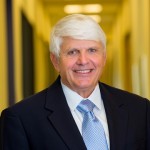Michael O’Sheasy Testifies before the South Carolina PSC on Net Energy Metering Rates for Photovoltaics
Categories: Distributed Energy Resources, Market Design, Net Energy Metering, Rate Design, Testimony
February 3, 2015
Advances in technologies that enable distributed energy resources (DER) and net energy metering (NEM) are having an impact on the production and pricing of electricity. To ensure fairness to all energy customers and utilities in South Carolina, the state legislature passed the Distributed Energy Resource Program Act of 2014 (Act 236), one of the nation’s first comprehensive laws regarding DER and NEM. An important provision of this legislation directed the state Public Service Commission (PSC) to hold a generic proceeding (Docket 2014-246-E) in order to implement the act’s requirements, including establishing the methodology to set NEM rates, participation targets, and rate structures providing for cost recovery from both customer-generators and customers who are not customer-generators.
In a collaborative effort of South Carolina Electric & Gas Company (SCE&G), Duke Energy Carolinas, Electric Cooperatives of SC, Santee Cooper, and 13 special interest groups, a Settlement Agreement was reached and utility-specific DER programs were designed. Convergence on a successful settlement required “give to get” for all parties. The algebraic methodology for the DER programs requires the construction of eleven cost and benefit components for renewables, particularly solar photovoltaics (PV).
For SCE&G to be in compliance with timelines in the legislation, the Settlement Agreement and the DER programs require the PSC’s prompt approval. If the Settlement Agreement and proposed DER programs are not approved, the PSC will need to hold what are likely to be lengthy and contentious additional hearings — which no one wants.
SCE&G engaged Michael O’Sheasy of Christensen Associates Energy Consulting to review the settlement agreement and testify before the PSC about the proposed rate design. A 30-year veteran of electricity pricing issues, Michael has a national reputation as an expert witness on electrical utility pricing programs, DER, and NEM. He recently testified on behalf of Wisconsin Electric Company and Progress Energy Company on similar matters. Michael concludes from his experience that effective pricing must be based on available, accurate data that allocate costs and benefits to the parties that incur them. In the South Carolina PSC proceeding, Michael testified that the proposed methodology in the Settlement Agreement–with its 11 categories of costs or benefits, including placeholders for costs that might later become quantifiable–makes the cut. (His testimony is available here.) Michael found reasonable the temporary incentives for solar PV, with the settlement condition that these subsidies end in five years. He recommended approval of the proposed Settlement Agreement, though he cautioned the PSC against the renewable technology requirements and rate issues that were suggested by various interveners, in the event that the PSC does not approve the settlement. Examples of these issues include consideration of CO2 emission costs in avoided costs, prolonged PV promotion via subsidization, and credits for possible but difficult-to-quantify societal benefits, such as improved health and local employment.
The South Carolina PSC is expected to rule by the end of February 2015.


